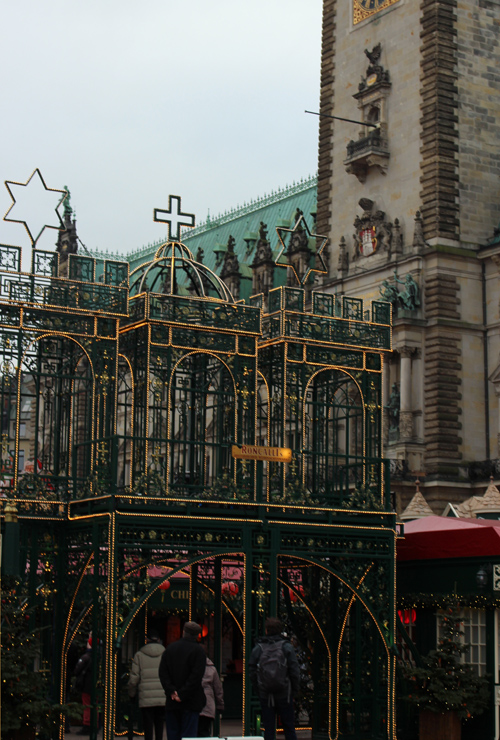Last snack before America
May that be true or not, Fischbrötchen (fish buns, basically a fish sandwich) are a quick snack or meal before catching a ferry or walking to work. In our case, it means rushing to snatch the last tickets for the Musical The Miracle of Bern at the box office with a Fischbrötchen in hand – how classy. A quintessential part of Hamburg food culture, it is quick and convenient and offers some sort of variety, if you count different styles and species of fish that can be found on a fish sandwich: Herring, fish patties, fried fish, salmon, smoked trout, the occasional shrimp sandwich…with a heavy dose of remoulade sauce and one pretentious lettuce leaf – or no greenery at all.
Nowadays, Fischbrötchen (yes, still talking about those) have moved from the harbor to the city and feed countless businessmen and students alike. Even traditional fish restaurants serve them in the front for a quick and affordable meal at the counter or to take away. As a harbor city and proximity of the North and Baltic Sea, fish is probably the most important ingredient and the star of the meal. Restaurants serve both local fish as well as fish brought in at the harbor. I go to try one of the well-known fish restaurant Daniel Wischer‘s locations. Mostly older people and a lot of white-haired clientele, I observe that almost everyone is getting fried fish with potato salad and follow suit. Presentation is simple and down to earth, the fish is incredibly fresh and very lightly seasoned. It occures to me that fish and potatoes are indeed a very popular combination, think fish and chips, fish pie, fish cake, potato cod (ok the last one is a joke) etc…
Influenced by working class cuisine and sailor’s food, Hamburg’s cuisine is also enriched by produce and spices coming in from overseas. Due to its location in Northern Germany, some dishes carry traits of Scandinavian or Nordic cuisine. Legend says there was a law in Hamburg limiting the amount of salmon the workers had to eat. After disappearing from the waters near Hamburg, salmon makes a comeback into the kitchens all over the globe.
Labskaus is a typical sailor’s dish that modern chefs are trying to elevate to haute cuisine. It is a mix of potatoes, beef, onions and beetroot, minced and cooked, then served with herring, a fried egg and pickles. The beetroot contributes a nice red color and hides any meat quality issues. I sit in a hipster restaurant and it is dark. In fact, there is so little light that photographs are not a possibility. Food presentation is okay, I guess, but I cannot even really see my food…
For sweets, Franzbrötchen (French buns?) are a popular choice. They are said to be Hamburg’s take on croissants during the French occupation. Croissant is a bit far of a stretch, but think of it as a croissant turned halfway into a Scandinavian cinnamon bun.
In December, Christmas markets pop up everywhere in the city where you can get all of the classic treats like Schmalzbrötchen (fried dough), mulled wine, bratwurst, waffles, roasted almonds…
Finally, the most important question of all: Is the hamburger from Hamburg?
December 5-7th, 2016







